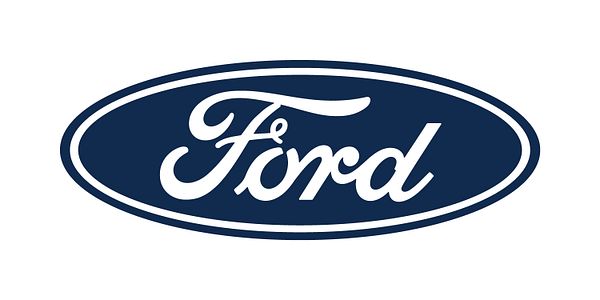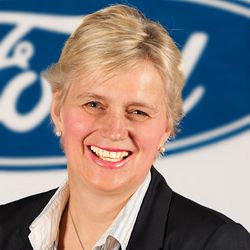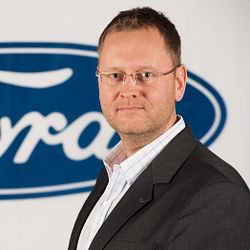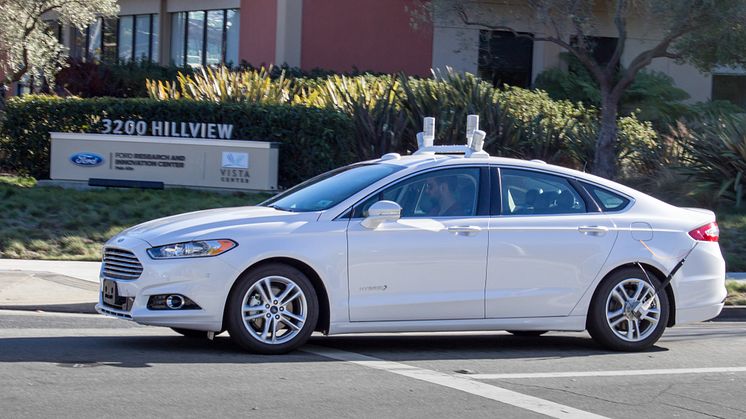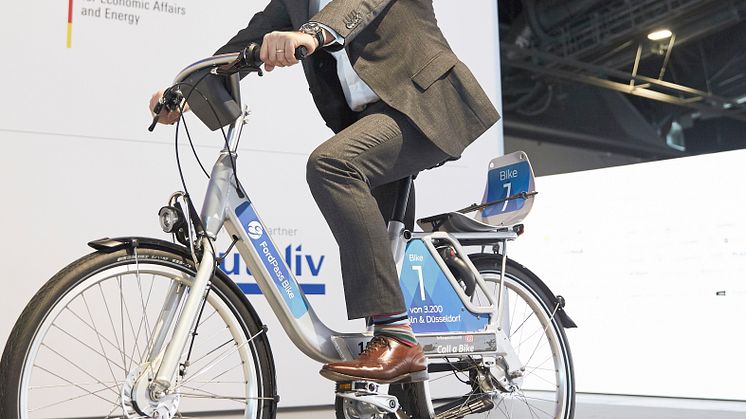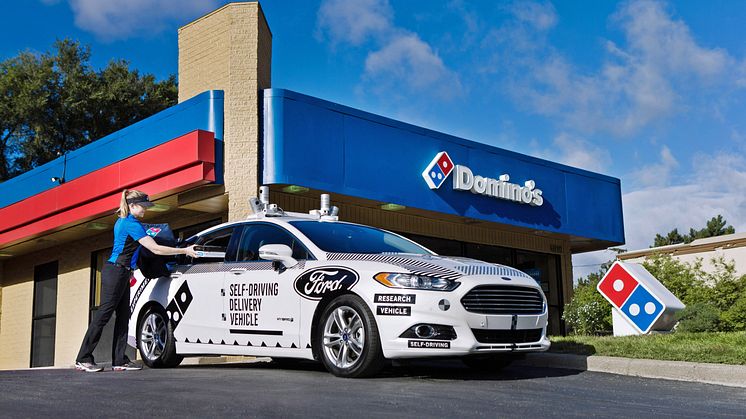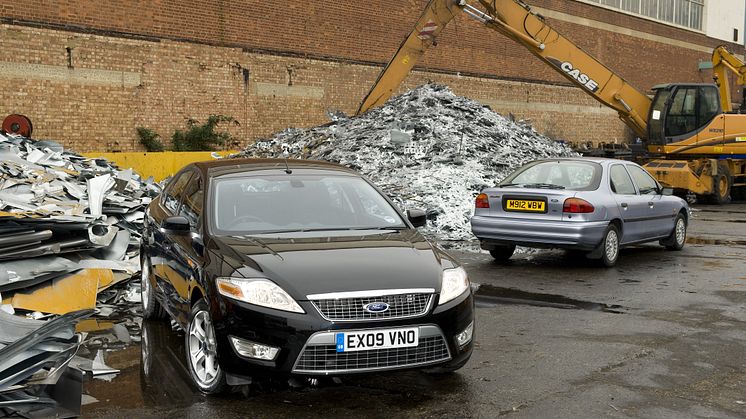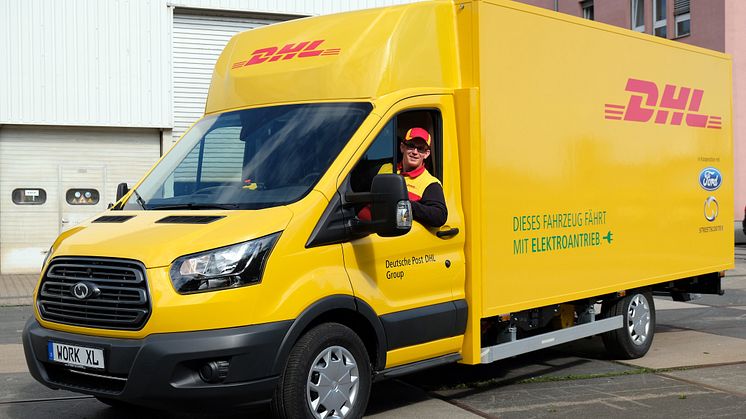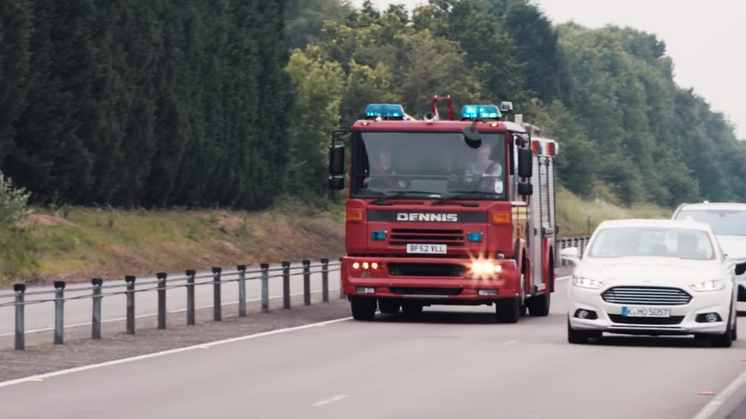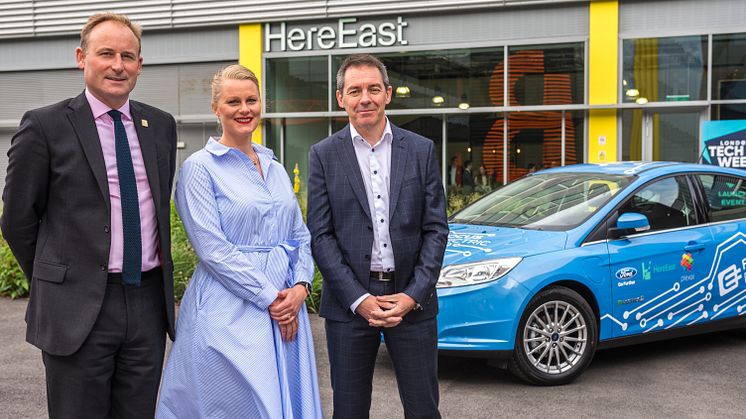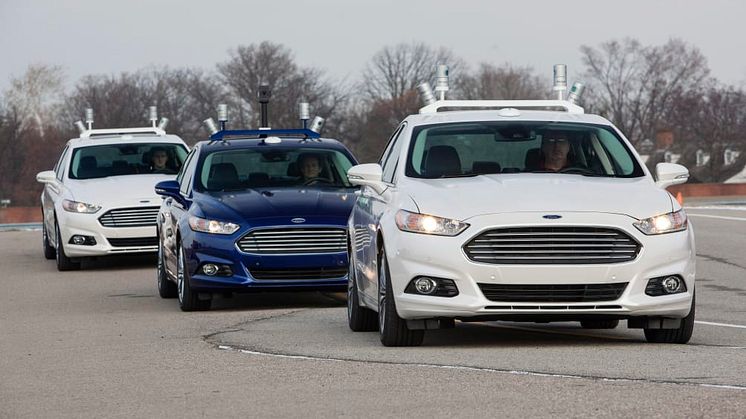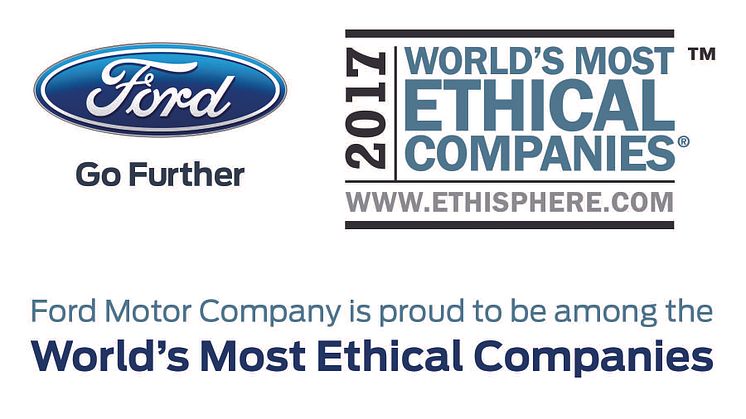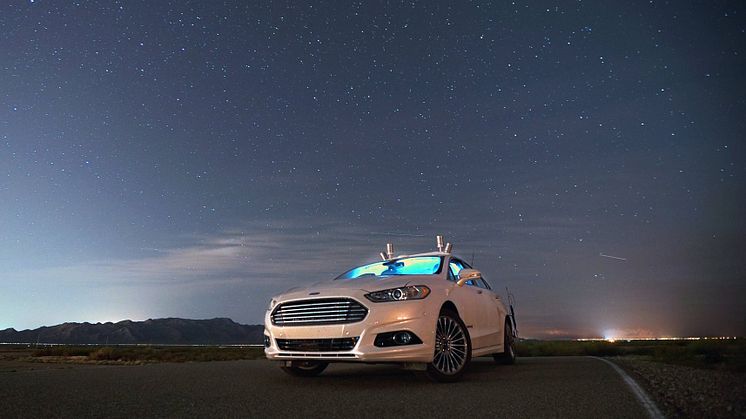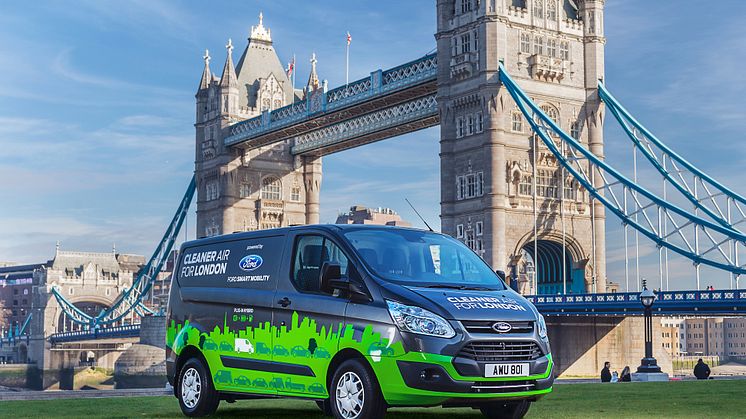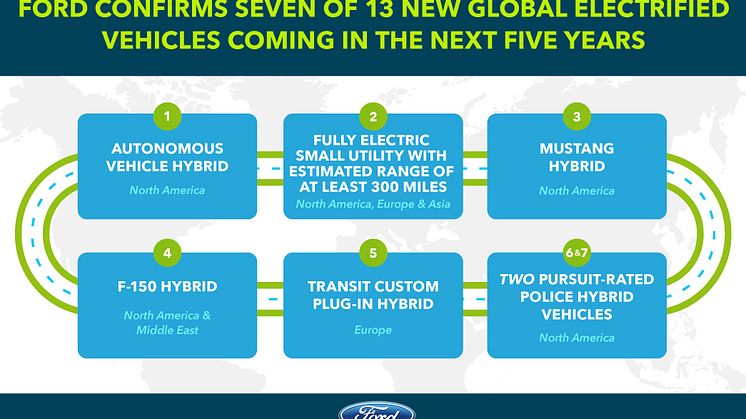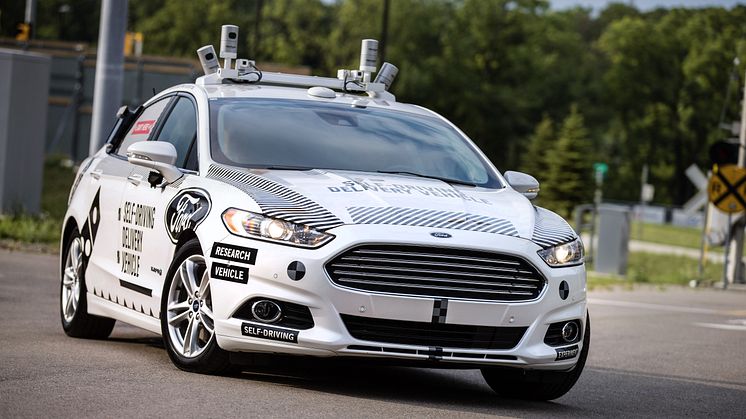
Pressemelding -
Ford’s Future: Evolving to Become Most Trusted Mobility Company, Designing Smart Vehicles for a Smart World
- Ford initiates aggressive “fitness” push, re-basing revenue growth assumptions and attacking costs, while redesigning company operations for long-term success
- Capital will be allocated to regions, products and services with highest potential for growth and return; product shift calls for more trucks and SUVs, fewer passenger cars
- Ford is accelerating work on smart, connected vehicles, including AVs and EVs and digital services to thrive in emerging transportation operating system
NEW YORK, Oct. 3, 2017 – Ford Motor Company today is providing a strategic update to investors, detailing plans to leverage its unique product strengths, trusted brand and global scale to refocus and thrive in an evolving and disruptive period for the auto industry.
The investor presentation follows a four-month deep dive into Ford’s strategy and business operations led by President and CEO Jim Hackett and Ford’s senior leadership team. Hackett said Ford will improve its operational fitness, refocus capital allocation and accelerate the introduction of smart vehicles and services.
“Ford was built on the belief that freedom of movement drives human progress,” said Hackett, who became Ford president and CEO on May 22. “It’s a belief that has always fueled our passion to create great cars and trucks. And today, it drives our commitment to become the world’s most trusted mobility company, designing smart vehicles for a smart world that help people move more safely, confidently and freely.”
The full slide deck of the presentation can be found here. Ford is reaffirming its 2017 full-year financial guidance and said its 2018 outlook will be provided in January.
Reiterating its long-term goal of an 8 percent automotive operating margin, Ford says it will embrace the profound technological changes and new competition buffeting the industry. To deliver, the company is expanding its scope to include vehicles and services – all designed around human-centered experiences. The company will tap its strengths integrating hardware and software in complex devices, its proven ability to deliver scale and the trust tied to the Ford brand.
Specifically, Ford is:
- Accelerating the introduction of connected, smart vehicles and services customers want and value. By 2019, 100 percent of Ford’s new U.S. vehicles will be built with connectivity. The company has similarly aggressive plans for China and other markets, as 90 percent of Ford’s new global vehicles will feature connectivity by 2020.
- Rapidly improving fitness to lower costs, release capital and finance growth. Ford is attacking costs, reducing automotive cost growth by 50 percent through 2022. As part of this, the company is targeting $10 billion in incremental material cost reductions. The team also is reducing engineering costs by $4 billion from planned levels over the next five years by increasing use of common parts across its full line of vehicles, reducing order complexity and building fewer prototypes.
- Allocating capital where Ford can win the future. This starts with the company reallocating $7 billion of capital from cars to SUVs and trucks, including the Ranger and EcoSport in North America and the all-new Bronco globally. Ford also has plans to build the next-generation Focus for North America in China, saving capital investment and ongoing costs. Further, Ford is reducing internal combustion engine capital expenditures by one-third and redeploying that capital into electrification – on top of the previously announced $4.5 billion investment.
- Embracing partnerships. Ford will continue to leverage partnerships, remain active in M&A and collaborate to accelerate R&D. The company recently announced it was exploring a strategic alliance with Mahindra Group as it transforms its business in India, and Zoyte with the intention of developing a new line of low-cost all-electric passenger vehicles in China. When it comes to autonomous vehicle development, the company recently announced a relationship with Lyft to work toward commercialization and a collaboration with Domino’s Pizza to research the customer experience of delivery services.
- Expanding electric vehicle revenue opportunities. The company recently announced a dedicated electrification team within Ford, focused exclusively on creating an ecosystem of products and services for electric vehicles and the unique opportunities they provide. This builds on Ford’s earlier commitment to deliver 13 new electric vehicles in the next five years, including F-150 Hybrid, Mustang Hybrid, Transit Custom plug-in hybrid, an autonomous vehicle hybrid, Ford Police Responder Hybrid Sedan, and a fully electric small SUV.
“When you’re a long-lived company that has had success over multiple decades the decision to change is not easy – culturally or operationally,” Hackett said. “Ultimately, though, we must accept the virtues that brought us success over the past century are really no guarantee of future success.”
Revamping product development, modernizing factories
At the same time, Ford is redesigning its operations to better compete in this disruptive era.
Hackett cites as a template the example of how the company reimagined the all-new 2015 F-150. Since then, the F-Series has gained market share and the average transaction price has increased 16 percent. It has improved fuel economy and increased capability for customers, thanks in part to a 700-pound weight reduction that helped make the F-150 the company’s most positive contributor to CAFE standards for model year 2018. Additionally, 90 percent of the manufacturing equipment can be reused for the next-generation F-150, reducing future capital requirements. Finally, the innovation on aluminum and light weighting will pay off across a range of Ford trucks and SUVs.
Other priorities include:
- Reducing orderable combinations of many nameplates, focusing on what customers value most. Already the team has identified a ten-fold reduction of orderable combinations in the next-generation Escape and is moving from approximately 35,000 combinations in the current generation of Fusion to 96 in the next generation.
- Rethinking product development processes and incorporating new technology. In the next five years, Ford is aiming to reduce new vehicle development time by 20 percent, with new tools and fewer orderable combinations. Through the use of virtual assembly lines, the company has been able to reduce new model changeover time by 25 percent.
- Redesigning the company’s factories of the future. Accelerating and scaling 3D printing, robotics, virtual reality tools and big data will improve logistics and enable a more efficient manufacturing footprint.
“We believe Ford will achieve its competitive advantage by focusing deeply on our customers – whether they’re drivers, riders or cities – and that’s where we are playing to win,” Hackett said.
Risk Factors
Statements included or incorporated by reference herein may constitute “forward-looking statements” within the meaning of the Private Securities Litigation Reform Act of 1995. Forward-looking statements are based on expectations, forecasts, and assumptions by our management and involve a number of risks, uncertainties, and other factors that could cause actual results to differ materially from those stated, including, without limitation:
- Decline in industry sales volume, particularly in the United States, Europe, or China, due to financial crisis, recession, geopolitical events, or other factors;
- Lower-than-anticipated market acceptance of Ford’s new or existing products or services, or failure to achieve expected growth;
- Market shift away from sales of larger, more profitable vehicles beyond Ford’s current planning assumption, particularly in the United States;
- Continued or increased price competition resulting from industry excess capacity, currency fluctuations, or other factors;
- Fluctuations in foreign currency exchange rates, commodity prices, and interest rates;
- Adverse effects resulting from economic, geopolitical, protectionist trade policies, or other events;
- Work stoppages at Ford or supplier facilities or other limitations on production (whether as a result of labor disputes, natural or man-made disasters, tight credit markets or other financial distress, production constraints or difficulties, or other factors);
- Single-source supply of components or materials;
- Labor or other constraints on Ford’s ability to maintain competitive cost structure;
- Substantial pension and other postretirement liabilities impairing liquidity or financial condition;
- Worse-than-assumed economic and demographic experience for pension and other postretirement benefit plans (e.g., discount rates or investment returns);
- Restriction on use of tax attributes from tax law “ownership change;”
- The discovery of defects in vehicles resulting in delays in new model launches, recall campaigns, or increased warranty costs;
- Increased safety, emissions, fuel economy, or other regulations resulting in higher costs, cash expenditures, and/or sales restrictions;
- Unusual or significant litigation, governmental investigations, or adverse publicity arising out of alleged defects in products, perceived environmental impacts, or otherwise;
- Adverse effects on results from a decrease in or cessation or claw back of government incentives related to investments;
- Cybersecurity risks to operational systems, security systems, or infrastructure owned by Ford, Ford Credit, or a third party vendor or supplier;
- Failure of financial institutions to fulfill commitments under committed credit and liquidity facilities;
- Inability of Ford Credit to access debt, securitization, or derivative markets around the world at competitive rates or in sufficient amounts, due to credit rating downgrades, market volatility, market disruption, regulatory requirements, or other factors;
- Higher-than-expected credit losses, lower-than-anticipated residual values, or higher-than-expected return volumes for leased vehicles;
- Increased competition from banks, financial institutions, or other third parties seeking to increase their share of financing Ford vehicles; and
- New or increased credit regulations, consumer or data protection regulations, or other regulations resulting in higher costs and/or additional financing restrictions.
We cannot be certain that any expectation, forecast, or assumption made in preparing forward-looking statements will prove accurate, or that any projection will be realized. It is to be expected that there may be differences between projected and actual results. Our forward-looking statements speak only as of the date of their initial issuance, and we do not undertake any obligation to update or revise publicly any forward-looking statement, whether as a result of new information, future events, or otherwise. For additional discussion, see "Item 1A. Risk Factors" in our Annual Report on Form 10-K for the year ended December 31, 2016, as updated by subsequent Quarterly Reports on Form 10-Q and Current Reports on Form 8-K.
About Ford Motor Company
Ford Motor Company is a global company based in Dearborn, Michigan. The company designs, manufactures, markets and services a full line of Ford cars, trucks, SUVs, electrified vehicles and Lincoln luxury vehicles, provides financial services through Ford Motor Credit Company and is pursuing leadership positions in electrification, autonomous vehicles and mobility solutions. Ford employs approximately 203,000 people worldwide. For more information regarding Ford, its products and Ford Motor Credit Company, please visit www.corporate.ford.com.
Emner
Om Ford Motor Company
Ford Motor Company er en global bilindustrileder basert i Dearborn, Michigan, USA, som produserer eller distribuerer biler på over seks kontinenter. Med ca. 166.000 ansatte og 70 fabrikker på verdensbasis inkluderer konsernet bilmerkene Ford og Lincoln. Konsernet leverer finansielle tjenester gjennom Ford Motor Credit Company. For mer informasjon vedrørende Fords produkter, vennligst besøk www.ford.no
Ford Europa er ansvarlig for å produsere, selge og vedlikeholde Ford-merkede kjøretøyer i 51 individuelle markeder og har ca. 66.000 ansatte. I tillegg til Ford Motor Credit Company inkluderer Ford Europas virksomheter Ford Customer Service Division og 22 produksjonsenheter, inklusive samarbeidsprosjekter. Den første Ford-bilen ble sendt til Europa i 1903 – samme år som Ford Motor Company ble etablert. Produksjon i Europa startet i 1911.
